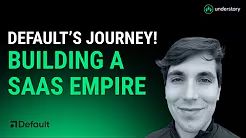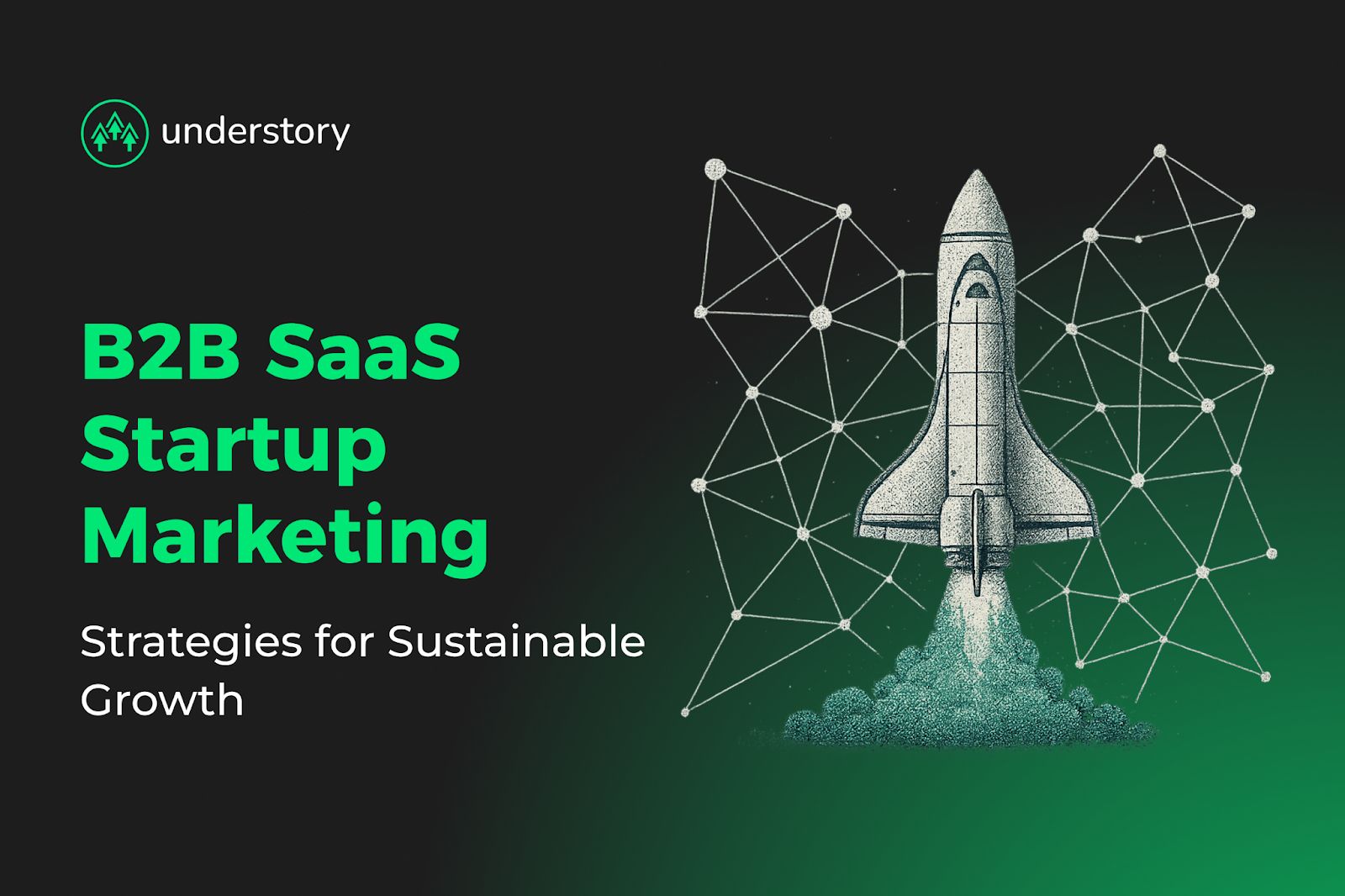
Understory Unfiltered: Santosh Sharan - From ZoomInfo to ZeerAI
Catch up on our Understory Unfiltered episode where Santosh Sharan shares why the same growth playbook never works twice and why two-thirds of SaaS companies will shut down.

Evaluate your MQL to SQL conversion according to industry benchmarks.
SaaS growth leaders waste strategic time wondering if their pipeline performance is competitive. You're converting 15% of MQLs to SQLs, but is that good? Should you be hitting 25%? Or are you already outperforming your vertical?
MQL to SQL conversion rates vary dramatically across B2B SaaS industries, making one decisive answer challenging to establish. Industry-specific benchmarks provide clearer metrics to evaluate your current performance and assess opportunities for improvement.
This analysis compiles conversion data from several comprehensive B2B SaaS conversion rate benchmark reports across multiple industry verticals. You'll find granular benchmarks by industry, business model, and lead source, plus the coordination factors that separate low performers from high achievers.
MQLs are prospects showing engagement signals without confirmed buying intent. These signals include demo requests, pricing page visits, and content downloads. SQLs represent leads that pass sales qualification using frameworks like BANT (budget, authority, need, timeline) and demonstrate clear purchase intent through actions like booking discovery calls or requesting technical specifications.
Your MQL to SQL conversion rate measures what percentage of MQLs become SQL opportunities. A rate of 15% means 15 out of every 100 MQLs advance to sales-qualified status. Calculate it as:
(Number of SQLs ÷ Number of MQLs) × 100
Conversion tracking reveals where go-to-market coordination breaks down. Low MQL-to-SQL rates signal misalignment between marketing and sales definitions of "qualified," timing gaps between marketing handoff and sales follow-up, channel quality issues hidden in aggregate MQL volume, or disconnects between content promises and sales conversations. Granular tracking by channel, campaign, and persona shows which marketing activities generate sales-ready pipeline versus vanity engagement metrics.
When benchmarking MQL to SQL rates, it’s helpful to consider business models as well as industry verticals. B2B organizations face longer buying committees and higher average contract values that extend nurture time, while B2C models drive broader top-of-funnel traffic with faster decision timelines.
Understanding these baseline differences helps calibrate realistic conversion targets. Here’s a quick overview:
| Business Model | MQL to SQL Range | Notes |
|---|---|---|
| B2B (General) | 12–21% | Median around 13–15%. Longer sales cycles due to buying committees and customization needs. Higher ACVs justify extended nurture periods. |
| B2C/D2C | 18–22% | Outperforms B2B with shorter decision timelines and more direct sales channels. Less stakeholder complexity. |
| Hybrid B2B2C | ~20% | Balances organizational and individual buyer needs. Career marketplaces and similar models perform well. |
| Product-Led Growth/PLG | 15–30% | Product-qualified leads (PQLs) significantly outperform traditional MQLs. In-app behavior signals drive higher conversion. |
Your specific business model impacts reasonable conversion expectations and qualification strategy. For instance, B2B's 13-15% median versus B2C's 18-22% range reflects stakeholder complexity to consider when setting conversion targets.
Longer B2B sales cycles require patience and extended nurture investments rather than attempting to match B2C velocity benchmarks. If you're running product-led growth with trials, prioritize in-app engagement signals over traditional MQL behaviors since product-qualified leads convert at 15-30% by demonstrating actual usage intent. Set realistic conversion targets based on your business model rather than comparing yourself to companies with fundamentally different buyer dynamics and decision-making structures.
Lead source creates dramatic variation in conversion performance. Inbound website leads outperform outbound email by 57×, while SEO-generated MQLs convert at nearly double the rate of paid advertising prospects. These disparities underscore the critical importance of channel optimization and resource allocation.
| Lead Source | MQL→SQL Conversion | Channel Characteristics |
|---|---|---|
| SEO | 51% | Highest mid-funnel conversion. Strong intent signals from organic search behavior. |
| Email Marketing | 46% | High lead-to-MQL and MQL-to-SQL conversion. Lower opportunity-to-close rates require nurture focus. |
| Webinars | 30% | Engaged audiences demonstrate time investment. Educational content builds qualified interest. |
| PPC | 26% | Lower mid-funnel performance but recovers with strong opportunity-to-close rates. |
| Events | 24% | Relationship-building creates qualified leads but requires long-term nurture for conversion. |
Channel selection determines conversion outcomes more than messaging or creative optimization. For instance, SEO's 51% conversion rate versus PPC's 26% rate reveals that intent-driven organic traffic delivers twice the SQL yield per MQL.
Evaluate whether your paid budgets could generate better returns through increased organic investment. Email's 46% conversion justifies aggressive nurture programs, while events' 24% rate means you should reserve them for enterprise deals requiring relationship development. Reallocate resources toward high-intent channels rather than spreading budgets evenly across all acquisition sources.
Conversion rates vary by up to 35 percentage points across B2B SaaS verticals, driven by factors including buyer sophistication, regulatory complexity, sales cycle length, and competitive intensity. Understanding your industry's range helps set realistic targets and identify improvement opportunities.
| Industry | MQL-SQL Conversion | Key Insights |
|---|---|---|
| B2B SaaS (Enterprise) | 13–40% | The 27-point range reflects qualification sophistication gaps. Enterprise SaaS companies with advanced lead scoring and tight sales-marketing alignment achieve 40% conversion. Companies using behavioral scoring models and phased buyer education significantly outperform the 13% baseline. |
| CRM & Sales Tech | 42% | High conversion driven by precise targeting in competitive markets. The MQL to SQL transition remains challenging due to customer resistance to changing internal procedures. Strong product-need fit and decision-maker access are critical success factors. |
| Cybersecurity (SMB) | 15–18% | Complex multi-stakeholder approvals extend sales cycles by 35%. Unclear implementation paths cause 62% of failed conversions. Specification-based criteria and regulatory-focused scoring improve performance. |
| Fintech | 11–19% | Market maturity creates dramatic performance variation. Streamlined digital processes and strong post-pandemic demand drive the upper range. Fast-moving adaptation requirements and multiple competitive evaluations suppress lower-end performance. |
| IT & Managed Services | 13% | Technical program complexity and evolving security landscapes limit conversion. Multiple B2B decision-makers slow progression through evaluation stages. Success requires emphasis on solution adaptability and customization capabilities. |
| Software Development | 14% | High competition and fast-moving technology landscapes challenge conversion. Differentiation through comparison content is essential. Market reports demonstrating latest industry developments help maintain competitive positioning. |
| Financial Services | 13% | Conservative conversion reflects multiple decision-makers and sensitive data concerns. Transparent security information builds trust with prospects. Regulatory environment complexity adds qualification friction at every stage. |
| Healthcare & Medtech | 13–14% | HIPAA compliance and multi-stage approval processes constrain conversion. Extended compliance requirements lower rates by approximately 12% versus industry norms. Cyber security concerns must be addressed upfront with detailed policy breakdowns. |
| Biotech & Pharmaceutical | 14–15% | Specialization challenges and regulatory environments impact qualification effectiveness. Monthly data decay rates of 22% in pipelines hamper follow-through. Establishing expertise authority and partnering with key opinion leaders improves results. |
| Edtech | 35% | Strong conversion occurs once leads enter the funnel despite difficult initial acquisition. Weak online competition favors companies with strong SDR and email strategies. Multi-touchpoint approaches prove critical for sustained engagement. |
| Industrial & Manufacturing SaaS | 16–18% | Limited online competition benefits industrial SaaS targeting precision. Manufacturing segments face budgetary constraints around equipment costs. Transparent pricing information and product trials prove essential for conversion. |
| Legaltech | 40% | Exceptional performance stems from serving sophisticated B2B markets. Email marketing and SEO generate particularly strong results. Trust-building through regulatory adherence demonstrations drives conversion success. |
| Project Management SaaS | 37% | High initial conversion faces challenges from trial standards creating many unconverting MQLs. Focus on SQL investment during trial periods improves outcomes. Qualification during evaluation stages separates serious buyers from explorers. |
| Adtech | 35% | Market saturation creates below-average performance across all funnel stages. Crowded competitive landscape demands strong differentiation. Precision targeting becomes essential to overcome competitive intensity and stand out. |
Data sources in this report: First Page Sage, Data-Mania, and The Digital Bloom.
The data reveals three distinct performance tiers.
For B2B SaaS marketing teams, these benchmarks provide context for pipeline planning and resource allocation. If your conversion rate falls below industry median, focus first on lead scoring refinement and sales-marketing alignment rather than increasing MQL volume. Organizations converting above industry averages should examine whether strict qualification criteria are filtering out viable opportunities or if superior coordination truly drives performance advantages.
Keep in mind, conversion rates are often coordination challenges, not fixed industry constraints. Companies achieving top-quartile performance often invest in behavioral lead scoring, sub-one-hour response times, and unified CRM visibility between marketing and sales teams.
Four factors can impact whether your MQL-to-SQL performance hits the median or climbs toward the rates of top performers.
Lead source orchestration: SEO-generated leads convert at 51% while email campaigns achieve 0.9%, demonstrating that channel selection impacts conversion more than messaging optimization. When specialists run paid media, outbound, and content syndication separately, prospects experience disjointed touchpoints that dilute intent signals.
Scoring intelligence: Static point systems can't handle modern SaaS buyer journeys spanning multiple stakeholders and extended evaluation cycles. Companies using behavioral scoring models achieve 39-40% conversion rates compared to demographic-only approaches. Machine learning engines that coordinate behavioral signals, firmographics, and third-party intent significantly increase qualified lead flow while reducing false positives.
Speed-to-lead coordination: Organizations responding within one hour achieve 53% conversion rates compared to 17% for responses after 24 hours. This 36-percentage-point gap punishes slow handoffs more severely than any other funnel factor. Automated chat sequences and calendar links eliminate coordination delays while preserving immediate response momentum buyers expect from modern vendors.
Sales-marketing alignment: Teams operating from shared CRM dashboards and unified lead definitions convert 30%+ of MQLs compared to siloed organizations achieving baseline 13% rates. Clear service level agreements around response times, disposition rules, and feedback loops transform specialist coordination from overhead into competitive advantage. Organizations with weekly pipeline velocity tracking achieve 34% revenue growth versus 11% for those with irregular tracking.
Consistently improving your MQL to SQL conversion rate drives scalable revenue growth without increasing marketing spend. Understory eliminates specialist management overhead through coordinated allbound expertise that provides services across three core areas:
Strategic Paid Media Management: ICP-driven LinkedIn, Google, and Meta campaigns with Clay audience enrichment. Conversion tracking and CRM integration provide real-time visibility into which channels generate a sales-ready pipeline.
Clay-Powered Outbound Engineering: Hyper-personalized campaigns with automated lead enrichment and CRM updates. Full-service sequencing books qualified meetings directly to your sales calendar while maintaining domain health.
Professional Creative Services: Conversion-optimized ad creatives, landing pages, and sales materials coordinated across touchpoints. Usage-based pricing means you pay only for design hours used.
As Claygency, we deliver real-time lead insights and prioritization using behavioral scoring and firmographic enrichment. When paid media engagement triggers personalized outbound sequences and LinkedIn interactions automatically update enriched CRM records, you increase conversion efficiency, reduce wasted effort on unqualified prospects, and accelerate pipeline growth through unified prospect experiences.
Schedule a call to discuss how we can improve your outreach MQL to SQL conversions.

Catch up on our Understory Unfiltered episode where Santosh Sharan shares why the same growth playbook never works twice and why two-thirds of SaaS companies will shut down.

Catch up on our Understory Unfiltered episode with Nico, founder and CEO of Default, on building a unified go-to-market platform

Coordinate paid media, outbound, and creative under one playbook for predictable SaaS pipeline.

Why outsourced lead generation fails and how to avoid the coordination trap.